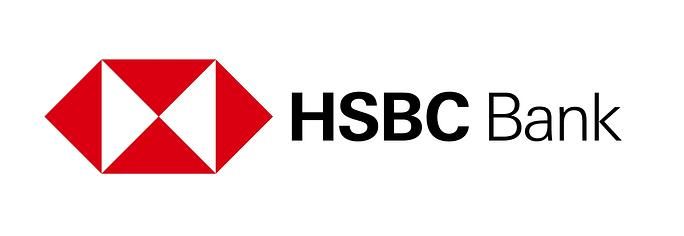‘Worst is yet to come:’ IMF slashes growth outlook as recession risks grow
BMO Economics now sees odds of North American recession topping 50%

Article content
The International Monetary Fund slashed its forecast for 2023 global economic growth to 2.7 per cent from 2.9 per cent Tuesday amid growing concerns that high inflation and rising interest rates could tip some countries’ economies into recession.
Advertisement 2
Article content
“This is the weakest growth profile since 2001 except for the global financial crisis and the acute phase of the COVID-19 pandemic and reflects significant slowdowns for the largest economies,” the IMF said in its October world economic outlook, which forecasts global growth will slow from six per cent in 2021 to 3.2 per cent this year, before falling further in 2023.
Article content
Article content
“In short, the worst is yet to come, and for many people 2023 will feel like a recession.”
No cavalry is lurking around the corner to rescue the economy or markets
BMO senior economist Sal Guatieri
The report comes amid a growing chorus of recession calls from economists and business leaders in North America.
On Monday, JPMorgan Chase & Co. chief executive officer Jamie Dimon became the latest major voice to predict a global recession was in the cards. Dimon told CNBC that rampant inflation, supersized interest rate hikes and the Russian invasion into Ukraine have muddied the global picture, and that a recession could occur within six to nine months.
Advertisement 3
Article content
In Canada, the Bank of Montreal’s economics team last week said the odds of a North American recession were now greater than even as the Bank of Canada continues its aggressive hiking cycle.
In an Oct. 5 note to clients, BMO senior economist Sal Guatieri said that an unprecedented wave of financial support in response to COVID and festering supply chain issues had sparked a new “pandemic:” high inflation.
The central bank’s attempt to bring inflation back to target — which has seen it hike the policy rate by three percentage points over the course of the year, bringing it to 3.25 per cent — is making a stark economic downturn all the more likely, Guatieri said.
“By our estimate, financial conditions are set to carve roughly two percentage points from U.S. growth next year and even more from Canadian GDP,” he wrote. “This reflects expected further monetary tightening, the angry bear ravaging equity portfolios, and a further correction in house prices. The recent pullback in commodity prices, while good for inflation, will also weigh on Canada’s economy.”
Advertisement 4
Article content
Guatieri also pointed to falling home prices as another factor weighing on the economy, which he noted have already slumped seven per cent. BMO expects total declines of about 20 per cent in Canada as rising borrowing costs continue to weigh on demand.
“We are of the view that borrowing costs won’t be falling anytime soon,” Guatieri wrote. “No cavalry is lurking around the corner to rescue the economy or markets.”
Guatieri read the tea leaves south of the border as a reflection of what Canada’s economy could expect, referring to U.S. Federal Reserve chair Jerome Powell’s comments on how taking the foot off the monetary policy pedal could force a repeat of 1970s-style inflation. In that era of “Great Inflation,” the headline figure peaked at 12 per cent and edged higher to 14 per cent in the 1980s.
Advertisement 5
Article content
Since the Fed isn’t pencilling in rate cuts until 2024, BMO now expects the federal funds rate to reach 4.6 per cent in February 2023, which is 75 basis points higher than they initially expected. For the Bank of Canada, the economics team now expects the terminal lending rate to hit four per cent by the end of the year, 25 basis points higher than they expected and in line with the growing number of economists who expect the policy rate to top out at four per cent.
During an Oct. 6 speech before the Halifax Chamber of Commerce, Bank of Canada governor Tiff Macklem acknowledged that more interest rate hikes would be needed to put a lid on decades-high inflation.
-
![Maru Public Opinion's Canadian household index suggests the mood of consumers is dour when it comes to the economy.]()
Households are feeling bleak about Canada’s economic prospects this fall
-
![Governor of the Bank of Canada Tiff Macklem walks outside the Bank of Canada building in Ottawa.]()
Big rate hikes could push Canada into severe downturn
Advertisement 6
Article content
At the very least, the restrictive policy is expected to bring about a moderate downturn. BMO does not expect household savings buffers to last — in the U.S., ravenous consumer demand has eaten through roughly a fifth of the stockpile, whittling it away from a peak of $2.4 trillion in Sept. 2021 to $1.9 trillion in recent months. Canadians are also expected to burn through stockpiles as they meet higher debt burdens and inflated prices at the grocery store and for gasoline.
“Facing numerous headwinds, both economies are rapidly losing steam, with consumers notably taking their lumps,” Guatieri said, adding Canadian retail volumes fell during the summer and U.S. real personal spending remained flat.
Growth is expected to pull back in both economies, with economists at BMO expecting very little growth in the second half of the year before a moderate contraction in the first half of next year.
“With 2023 likely to mark a lost year for growth, the unemployment rate will likely rise by more than a percentage point to 5.0 per cent in the U.S. and to 6.5 per cent in Canada,” Guatieri wrote. “That’s the pain required to ease wage pressures and ultimately restore price stability.”
• Email: [email protected] | Twitter: StephHughes95
Advertisement
For all the latest Business News Click Here
For the latest news and updates, follow us on Google News.




